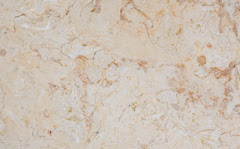I found this interesting article on Slate today -
Slate is found extensively, throughout the British Isles and has, for centuries, been a major source of building stone. Historically, and, in common with other stones, it was first used in and around the immediate areas of availability.The term slate is often used to describe any rock that can be easily split into thin sheets, principally for roofing purposes. True slate is defined by the presence of a ‘slaty’ cleavage; this allows the slate to be split at almost any point through the stone parallel to the cleavage plane. Most true slates are metamorphosed sediments, often formerly mudstones; however, some British “slates” are derived from volcanic ash sequences and are not true slates in the strict geological sense. AppearanceThe major UK sources of slate, with their distinctive colours, are the Lake District blue/grey, light green, olive green and silver grey, North Wales blue, grey, blue-black and red, and Cornwall - grey.
Slate is easily split (“riven”) into thin sections, giving a natural finish. Other finishes include sawn, sanded, fine rubbed, flame textured, bush hammered and water jet. ApplicationsFrom the very early, basic applications, British Slate is now used for very wide and diverse purposes. Modern quarrying and machine processes allow prime blocks to be sawn or split into large slabs and a variety of thicknesses. Current products include: roofing, cladding, cills, copings, flooring & paving, treads, plaques & memorials, worktops & fireplaces.Slate is typically a very durable construction material and rarely exhibits visible degradation, even when placed under extreme atmospheric conditions for many years. For flooring purposes U.K. slate is unlikely to delaminate or exhibit efflorescence.
High flexural strength and typically very low porosity makes slate eminently suitable for flooring purposes and it requires little maintenance. Caution should be exercised when choosing material marketed as slate as some may not be suitable for flooring. If any doubt exists about the material being considered, specialist advice should be sought. Very thin, split, natural riven sections are used for roofing and the same methods produce thicker material for flooring and cladding. Slateis readily available in sawn, fine rubbed and other finishes wuch as sand-blasted and flame textured.Performance British Slate has a proven record of durability and being supplied fit for its intended purposes. This is readily seen on countless buildings in the UK and many areas of the world. Such examples of installation are witness to the ability of slate to withstand the rigours of extreme atmospheric conditions. Slate is extremely stable and will not degrade, warp or twist. Quality Assurance, management systems are widely used throughout the industry.
Subscribe to:
Post Comments (Atom)








No comments:
Post a Comment